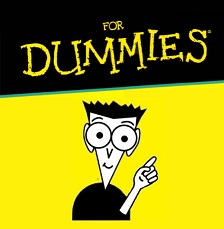The Aussie dollar has been sent on another downward spiral after billions of dollars were wiped off the global stock market. Australia will be even more appealing for those trading in the pound but locals will have to dig deeper to afford their summer vacay.
Frightening numbers and dramatic graphs are used by men in suits as they discuss whether the economy is heading for another crisis. This foreign language of jargon and acronyms can be impossible to understand unless you have a finance degree. But don’t fret, the sun is never far and exotic lands can be reached with this quick-key term explainer.
Dow Jones Industrial Average
Often referred to as ‘Dow Jones’ or ‘the Dow’.
Invented by Charles Dow in 1896, the DJIA is one of the most watched indices in the world. It is a price-weighted average of 30 significant stocks (such as Disney and Microsoft) traded on the New York Stock Exchange and the Nasdaq.
Nasdaq
Listed under the symbol ‘NDAQ’ and has been part of the S&P 500 since 2008.
Created by the National Association of Securities Dealers, the Nasdaq is an electronic marketplace for buying and selling securities, as well as being the benchmark index for U.S. technology stocks. Basically, anyone who is someone in the tech world is all about the Nasdaq, think top-dogs like Apple, Google and Amazon.
The system was developed so investors could trade with speed and transparency (the forefathers also blame this system for any mistakes made because computers are way less smarter than humans). The Nasdaq separated from NASD and began operating as a national security exchange in 2006. In 2007 it combined with the Scandinavian exchange group OMX to basically take over the world by becoming the largest exchange company globally – Nasdaq OMX.
Standard & Poors 500 index
Often referred to as ‘S&P 500’ or ‘S&P’.
An index of 500 stocks chosen for reasons such as market size, liquidity, and industry groupings, it is designed to be a leading indicator of U.S. equities.
S&P is said to be a benchmark index of the market as it has a larger representation than the Dow Jones. This is pretty straight forward, think primary school maths: if Johnny has 500 and Billy has 30 who has more? Stick with Johnny.
Financial Times Actuaries 100 index
Better known as ‘Footsie’ or ‘FTSE 100’.
Jointly owned by the Financial Times and the London Stock Exchange, the FTSE 100 is the most widely used stock market index globally, representing roughly 80 percent of the LSE market.
The Footsie consists of 100 blue chip stocks that trade on the London Stock Exchange. The index is weighted by the size of the company, the bigger it is the larger share of the index.


